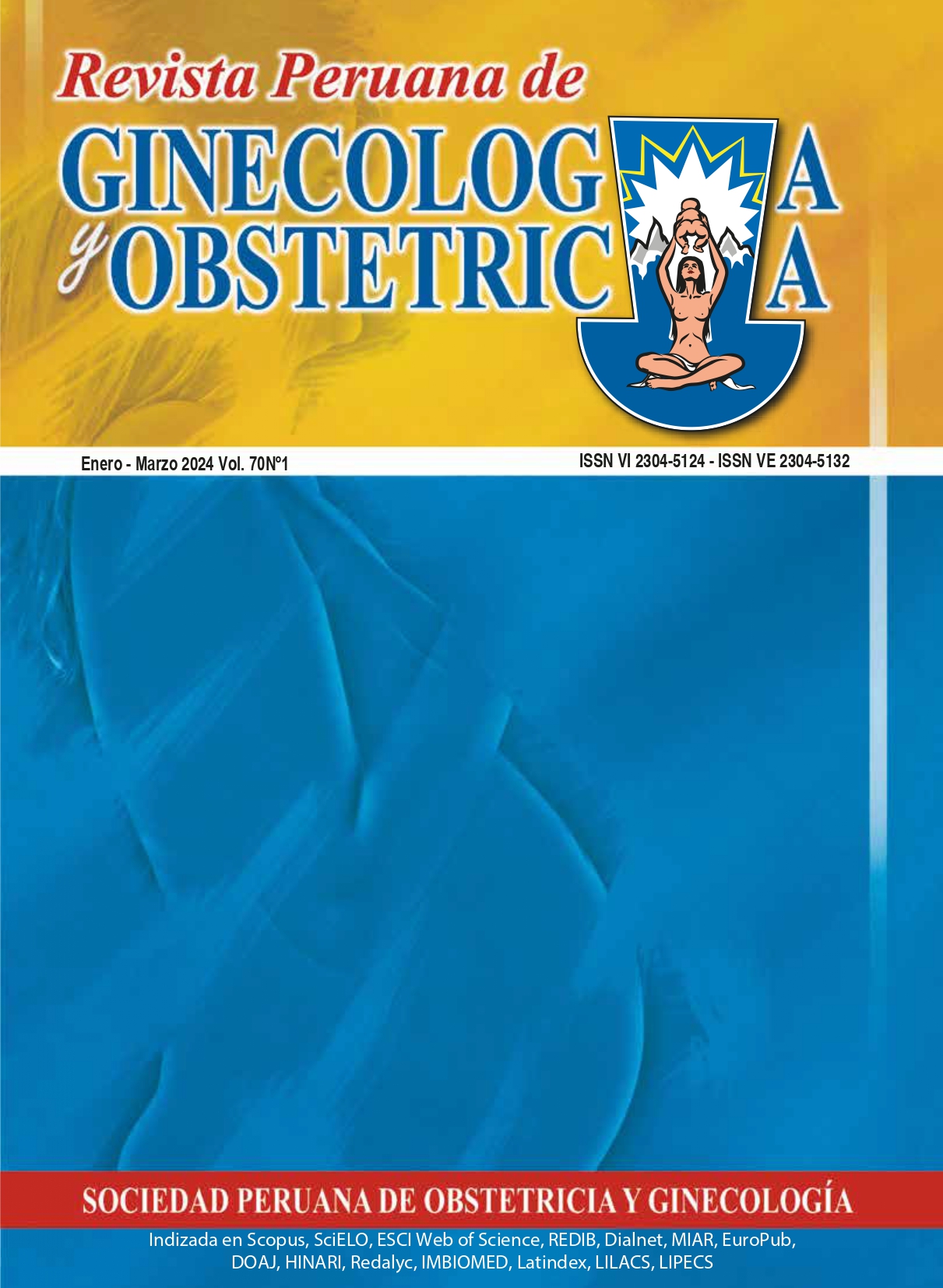Prenatal diagnosis and perinatal outcome in newborns with esophageal atresia
DOI:
https://doi.org/10.31403/rpgo.v70i2594Keywords:
Esophageal atresia, Ultrasonic prenatal diagnosis, Neonate, Indicators of morbidity and mortalityAbstract
Introduction: Esophageal atresia is a rare congenital malformation of the digestive
system. Early diagnosis is essential to plan adequate medical and surgical treatments.
Objective: To evaluate the diagnosis of esophageal atresia using prenatal ultrasound
and to describe the perinatal outcomes associated with this pathology. Methods:
Descriptive, retrospective study of newborns with confirmed esophageal atresia
seen at the Instituto Nacional Materno Perinatal (INMP) between 2019-2021.
Data were collected on medical and ultrasound diagnoses, as well as maternal
and neonatal variables. The procedures were approved by the institution's ethics
committee. The information was kept confidential using alphanumeric codes, and a
coded and restricted database was created for analysis. Results: There were 46,301
births at the INMP. Eighteen cases of confirmed esophageal atresia were identified
(3.9 per 10,000 births). It was found that 66.7% of cases with esophageal atresia had
some other associated malformation, cardiac being the most frequent. Intrauterine
growth restriction (66.6%) and polyhydramnios (55.5%) were the most common
findings in prenatal ultrasounds. Mortality was 50%, but only 20% when excluding
fetuses with malformations. Conclusions: In neonates with confirmed esophageal
atresia, intrauterine growth restriction was the most frequent ultrasound finding.
Polyhydramnios and small or absent stomach were observed in about 50% of
the cases, so their absence does not exclude the possibility of this pathology.
The incidence of associated malformations was similar to that reported in other
publications, but infant mortality was higher even after excluding malformed fetuses.
Downloads
Downloads
Published
How to Cite
Issue
Section
License
Copyright (c) 2024 Erasmo Huertas-Tacchino, Silvia Sanca-Valeriano, Pedro M. Arango- Ochante, Fabiola Campos Salazar, Yesenia Tania Teran Castro, Rosa Elvira Vallenas Campos, Jackelyne Alvarado Zelada

This work is licensed under a Creative Commons Attribution 4.0 International License.
Esta revista provee acceso libre inmediato a su contenido bajo el principio de que hacer disponible gratuitamente la investigación al publico, lo cual fomenta un mayor intercambio de conocimiento global.















